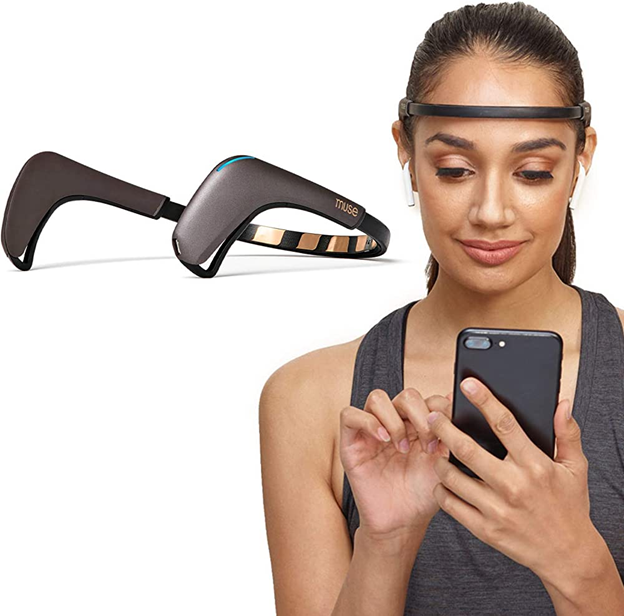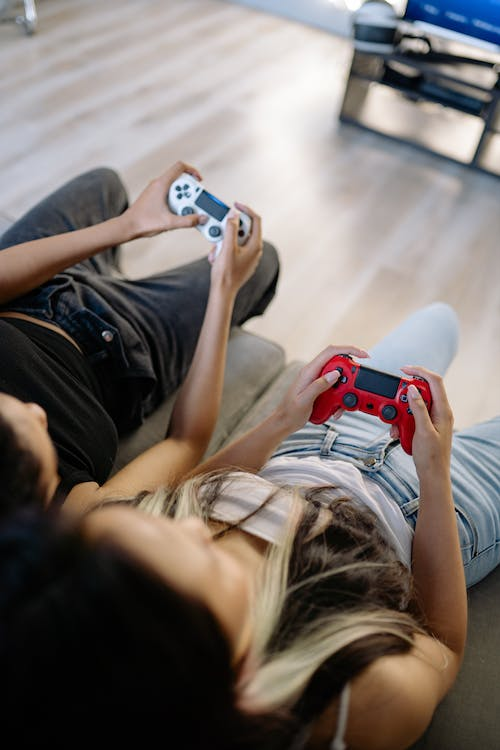Some decades ago, the smartphone was an emerging device, and other wearable technology, like the smartwatch, was a mere fantasy.
But due to technological advancement, smartphones are here with us. And most of our daily tasks are completed using smart devices in the comfort of our homes, and biofeedback is not an exception.
Biofeedback was initially used only in clinical settings. However, in recent times, so many home biofeedback devices have flooded the market.
This blog post explains the various home biofeedback devices and their effect on our overall well-being.
Biofeedback and health
Biofeedback is a mind-body therapy that enables you to recognize diverse physiological changes as they take place in response to various stressors and circumstances. And using them help control, minimize stress, and improve your health and well-being.
Here, you are connected through the skin sensors to a machine that detects physiological indicators, including heart rate, muscular tension, and breathing patterns.
And these measurements are presented in a variety of visual and auditory forms on the biofeedback device.
You can do various relaxation techniques either alone or with a therapist, and the device provides real-time feedback regarding your subconscious physiological reactions.
For instance, a slow heart rate can be indicated through a calming musical beat or a light changing from red to blue. This shows that the brain wave activity is calm.
By calming your body and engaging in mindfulness practices, biofeedback aims to bring about subtle changes in the mind-body connection, which help you manage stress.
Whether with meditation or not, home biofeedback devices can be used as a training tool. This will enable you to practice mindfulness so that you can be healthy despite the stress and obstacles of daily life.
11 home biofeedback devices
Due to the numerous benefits of biofeedback, people choose to practice it at home. As a result, a wide variety of home biofeedback devices are now available. Below are 11 home biofeedback devices:
1. Reflect Orb biofeedback device
The Reflect Orb is a biofeedback tool that you can use at home. It connects to an app to monitor your progress and helps you better understand your training results.
The heart rate variability (HRV) and electrodermal activity (EDA) readings used by the orb are obtained through your fingertips when you hold the device.
While the app monitors and evaluates your progress, the soft, rounded device guides you toward a calmer mood by changing color in response to your stress levels.
The Reflect App also provides users with relaxation advice and reminders for meditation to accompany them on their wellness journey.
2. The Muse Headband

The Muse headband uses electromyography (EEG) to monitor your brain activity and direct it toward relaxation and concentration.
The Muse headband can connect to your smartphone through Bluetooth. The Muse app keeps track of your meditation sessions and plays soothing weather sounds when your mind is at ease.
But stormy weather sound is played when you are not fully engaged in the meditation. This is to prompt you to revert back to your breath.
The app includes a number of graphs and charts that you can use to review your findings and monitor your progress. With Muse, you can keep a real-time eye on your heart, breathing, and mental activity.
3. The EmWave2
This home biofeedback device connects to your computer and tracks minute variations in your heart rate using heart rate variability (HRV) data.
It monitors coherence, which is a state of synchrony between the brain, heart, and nervous system. Coherence plays a vital role as it enhances both emotional well-being and performance.
Irregular heartbeat rhythms impacts our cognitive function and general well-being when the body is under stress.
But positive emotions ensure your heart pattern is more structured and coherent. The purpose of this device is to encourage rest, relaxation, and attention.
4. Unyte iom2
Unyte iom2 uses an ear clip to determine your Resonance score, which represents your tension or relaxation level.
When used with an interactive meditation known as Journey, it helps people to become aware of their physical state and thoughts while directing them through deeper meditations.
The interactive meditation comes with a breathing indication that guides users to their ideal breathing rate. Unyte iom2 has a web-based dashboard that monitors its use and your progress. And it is compatible with computers, tablets, and smartphones.
5. Interactive Video Games

Video games with biofeedback have become widely available in recent years. These are fun and interesting approaches to practicing biofeedback at home.
These computer-based applications sometimes use multichannel EEG and finger sensors to assess skin conductance, pulse, and heart rate variability.
Biofeedback video games use a competitive “relax-to-win” strategy to maintain motivation and interest levels in a player-versus-player setting. And they go beyond inducing relaxation and stress management techniques.
Studies have demonstrated that playing interactive video games with biofeedback techniques can help people feel less stressed and anxious. Some biofeedback video games include the following:
- Dojo
- Nevermind
- MindLight
- Deep
- StressJam
6. Smartwatches

Smartwatches are among the most common wearables in the market. It has gyroscopes and accelerometers to track movement patterns, physical exertion, and impact forces.
These biosensors enable users to modify their technique while engaging in fitness activities and assist in identifying injury risk factors.
Photoplethysmography or an ECG can monitor breathing rate, heart rate variability, and heart rate. Galvanic skin response and temperature-based biosensors can also tell you how you’re feeling mentally.
This device uses Bluetooth to connect with mobile applications, after which they provide physiological data in a way that is easily understandable.
This includes visual representations of the resting heart rate, the quantity of burned calories, the number of steps, and the length of exercise time.
The device software’s proprietary algorithms can determine the user’s personal activity scores by combining heart and physical activity measurements.
7. Handheld GSR biofeedback
Sweat gland activity is measured using portable galvanic skin response (GSR) biofeedback devices to determine your level of relaxation.
It sends feedback in the form of a tone to headphones. The tone’s pitch changes in direct proportion to the level of tension. When tension rises, the tone’s pitch rises, and when tension falls, the tone’s pitch falls.
The finger sensors used in most current portable GSR devices connect directly to the microphone port on your smartphone or tablet. You will receive feedback through smart bulbs that change color or brightness based on your degree of relaxation.
Galvanic skin response also assists people in deciding which wellness alternatives are best for them.
8. Portable EMG biofeedback
Home EMG biofeedback devices are 1-2 channel machines that use electrodes applied to the skin to capture muscle activity.
These devices can monitor and treat a wide range of muscular issues, such as incontinence, pelvic floor issues, chronic pain, and impairments as a result of illness or injury.
There are also channels for neuromuscular electrical stimulation (NMES) on several of these home EMG devices. NMES rehabilitates neuromuscular, and provides electrical impulses to specific muscles.
9. HeartMath Inner Balance
Although worn in the ear, this is not a separate device with a built-in display. The Inner Balance connects to your phone or tablet through Bluetooth.
This makes it more comfy and unnoticeable, which is great for people who move a lot and may not like to carry extra weight. Also, real-time data will be available on your phone.
With this device, you will have to time your breathing with the color wheel that steadily expands and contracts when you open the app.
The aim is to turn the outside circle green to indicate improved resonance, with blue denoting that there is an opportunity for more growth and red denoting that you are farther away. This device requires that the user has either an Apple or Android phone.
10. Apollo Neuro
Apollo Neuro comes with a strap-on device for your wrist or ankle as well as a smartphone app. There are few controls on the side of the device, so you won’t always need your phone.
The device emit inaudible, low-frequency sound waves that gently vibrate. Your nerves pick up these vibrations, which change the way you feel.
There are up to 7 vibration modes in the app, such as “Energy and Wake Up,” “Clear and Focused,” and “Meditation and Mindfulness”, etc. You can also change the intensity and choose its duration.
11. EliteHRV App
Elite HRV uses a heart rate monitor strap to obtain the most precise readings. On its website, Elite HRV provides courses on how to train your nervous system, similar to how you would train your muscles.
The app gives you thorough HRV readings, trend analyses, and wellness scores by connecting a compatible HRV device to your smartphone.
Also, it provides tools like biofeedback games, guided breathing exercises, and daily HRV improvement recommendations.
Take home
Home biofeedback devices are an effective way to reduce stress and promote healthy living. These devices monitor and manage your physical and emotional well-being.
And you have more control over your physiological reactions to stimuli by using these devices consistently while integrating mindfulness practices.
- Manual vs. Automated Cleaning Equipment: Which Should You Choose? - December 15, 2023
- Cost Efficiency of Investing in Professional Cleaning Equipment - December 8, 2023
- Safety Precautions When Using Professional Cleaning Equipment - November 26, 2023
